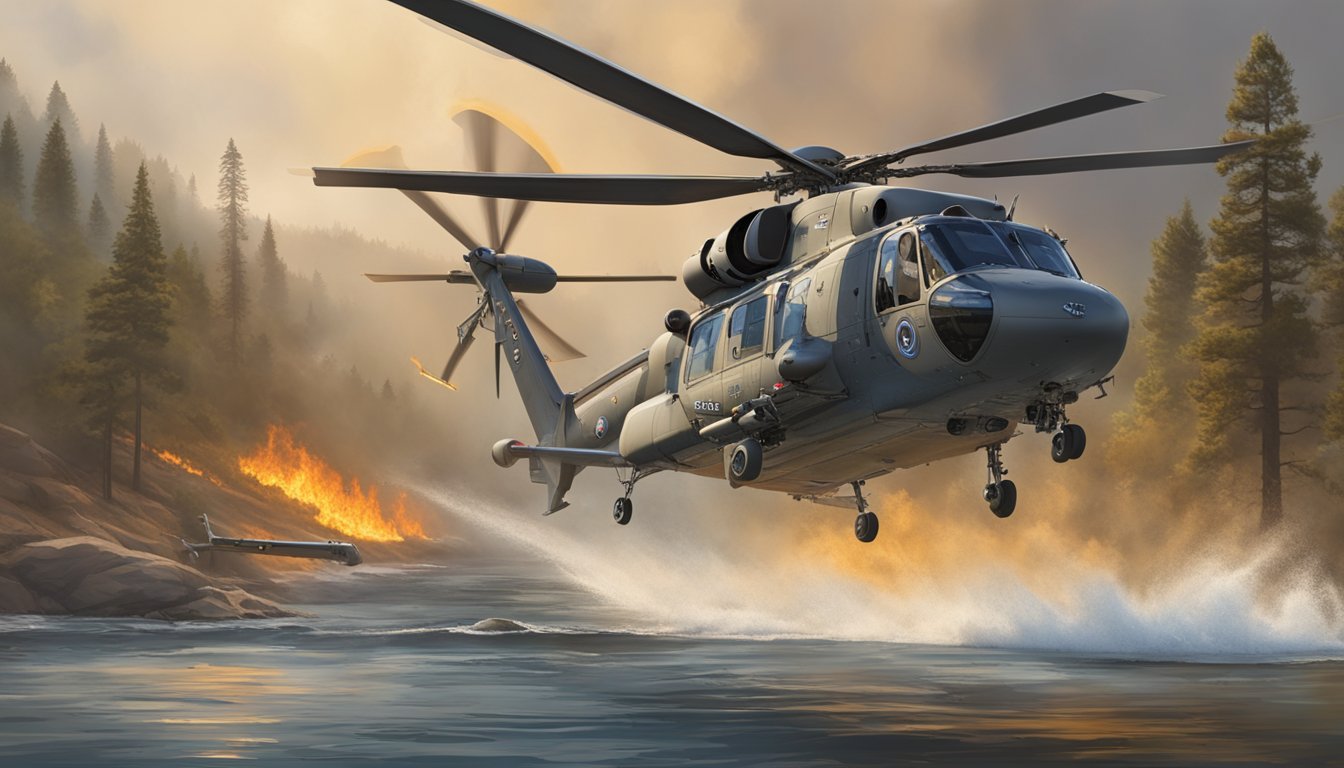Amidst swirling clouds of dark smoke, a Chinook helicopter from the California National Guard gracefully navigates a narrow canyon, hovering 500 feet above a fierce wildfire.
Suddenly, a torrent of water cascades from the bucket beneath the aircraft, and a plume of white mist rises, marking the success of the drop.
Training and Experience
Chief Warrant Officer 5 Joseph Rosamond highlighted the necessity of rigorous training and experience for such operations.
He described the profound sense of fulfillment derived from serving the community, stressing that a strong work ethic is vital for success in this challenging field.
In 2020, Rosamond’s team played a crucial role in rescuing over 300 people and nearly 30 pets stranded at an RV campground during a wild inferno.
As California grapples with wildfires once more this week, National Guard helicopters have been deployed frequently, performing countless water drops to combat the flames that have ravaged the state in recent years.
Ongoing Wildfire Challenges
The ongoing wildfires, intensified by the fierce Santa Ana winds, have scorched more than 40,000 acres, with the Palisades Fire standing out as particularly devastating.
According to Cal Fire, the infernos have tragically claimed 23 lives and destroyed more than 12,000 structures.
Traditionally, California’s fire season runs from June to November.
However, recent incidents showcase the unpredictability of wildfires, illustrating how conditions can lead to outbreaks at any moment.
For decades, the California National Guard has collaborated with Cal Fire, enhancing local firefighting efforts during these critical times.
Operational Insights
Rosamond spoke of the satisfaction that follows a successful water drop, emphasizing their commitment to executing effective operations while conserving resources.
Initially, Rosamond and his team were dispatched to Camarillo, just 20 miles from Malibu in the heart of the fire-affected region.
However, strong winds ultimately forced them to return to their home base in Stockton, located two hours north.
While waiting for further orders, Rosamond shed light on how firefighting crews perform quick maneuvers essential for battling wildfires.
He shared that crews receive daily briefings to keep updated on weather conditions and fire progression, including potential dangers to structures in the flames’ path.
An air attack supervisor, acting like a ground battalion chief, orchestrates these missions.
When ready to take action, the crew flies to a nearby water source, such as a lake or pond, to fill their bucket—capable of holding around 16,000 pounds—either by hovering or skimming the surface.
Once loaded, they receive instructions from an air controller, typically in a fixed-wing aircraft overhead, who guides them to their designated target, whether it’s an active blaze or an established fire retardant line.
These red markings help slow the spread of fires.
Rosamond explained that the crew generally descends from about 500 feet down to around 50 feet for the drops, though conditions can alter these altitudes.
Wildfires present numerous challenges, including thick smoke and extreme heat, which can limit visibility.
Pilots must strategically navigate, considering wind patterns and avoiding the most smoke-filled areas when possible.
Once the target is in sight, the pilot communicates with flight engineers located in the rear of the helicopter.
One engineer leans out to aid with visibility and alignment for the drop, while another prepares to release the water using a cable system linked to a release handle.
Rosamond elaborated on the timing of the drop, explaining that the pilot directs the crew, with the engineer counting down as the water is let loose.
As the bucket empties, maintaining control becomes crucial; the sudden weight shift can affect altitude.
To qualify for water-drop missions, pilots undergo a demanding training regimen with hundreds of flying hours and specialized experience in fire operations.
Even non-pilot crew members must complete comprehensive training alongside Cal Fire annually.
Rosamond acknowledged the skills necessary to operate optimally in such hazardous environments, also recognizing the essential support from local pilots who join firefighting missions throughout the year.
Beyond conducting water drops and rescues, National Guard crews also take on the role of aerial observers, monitoring the safety of ground crews engaging with the flames below.
Reflecting on the immediate impact of their work, Rosamond contrasted it with earlier deployments where outcomes were less visible.
Seeing the tangible results of their actions—like suppressing flames to protect surrounding areas—offers a deeply gratifying sense of accomplishment.
Source: Taskandpurpose

